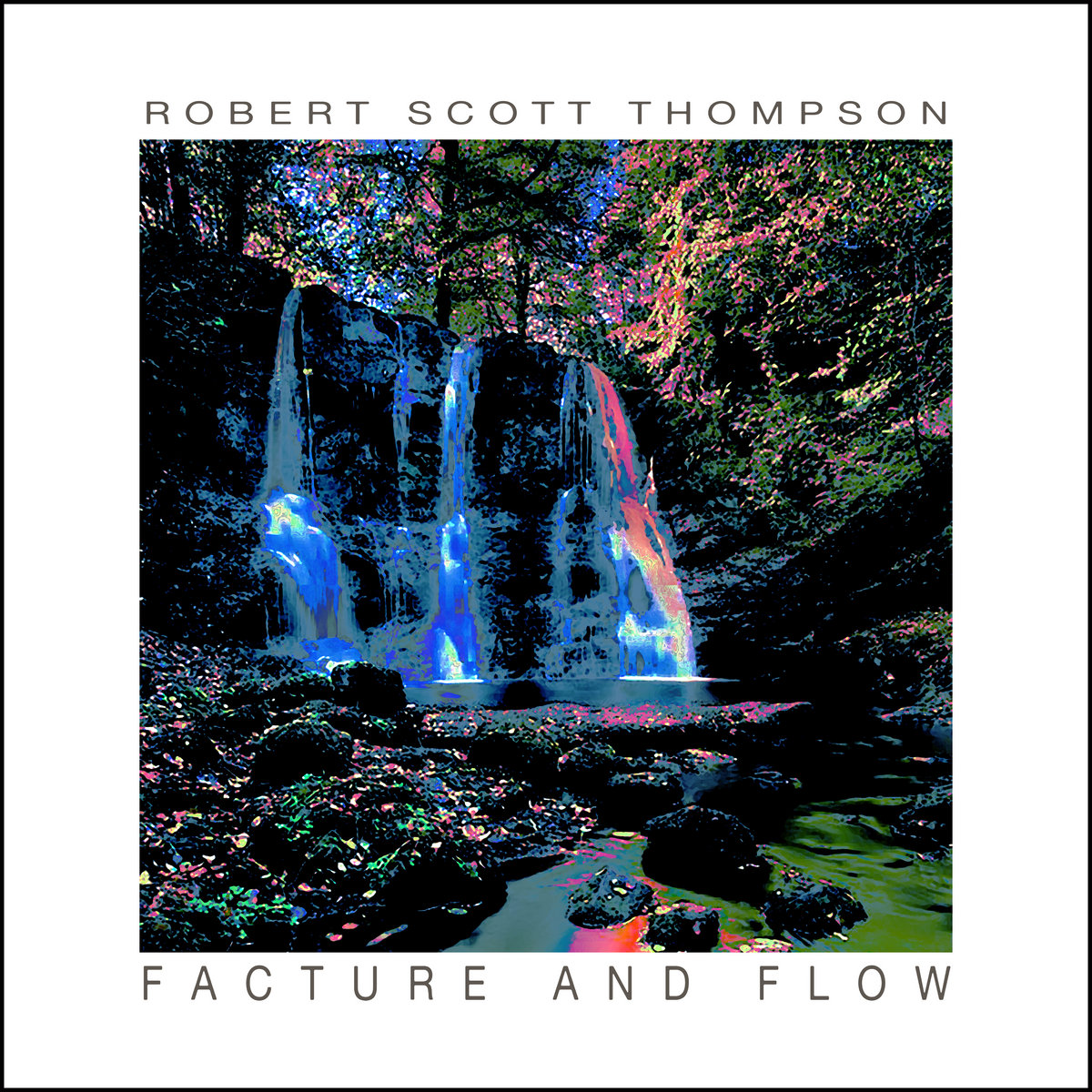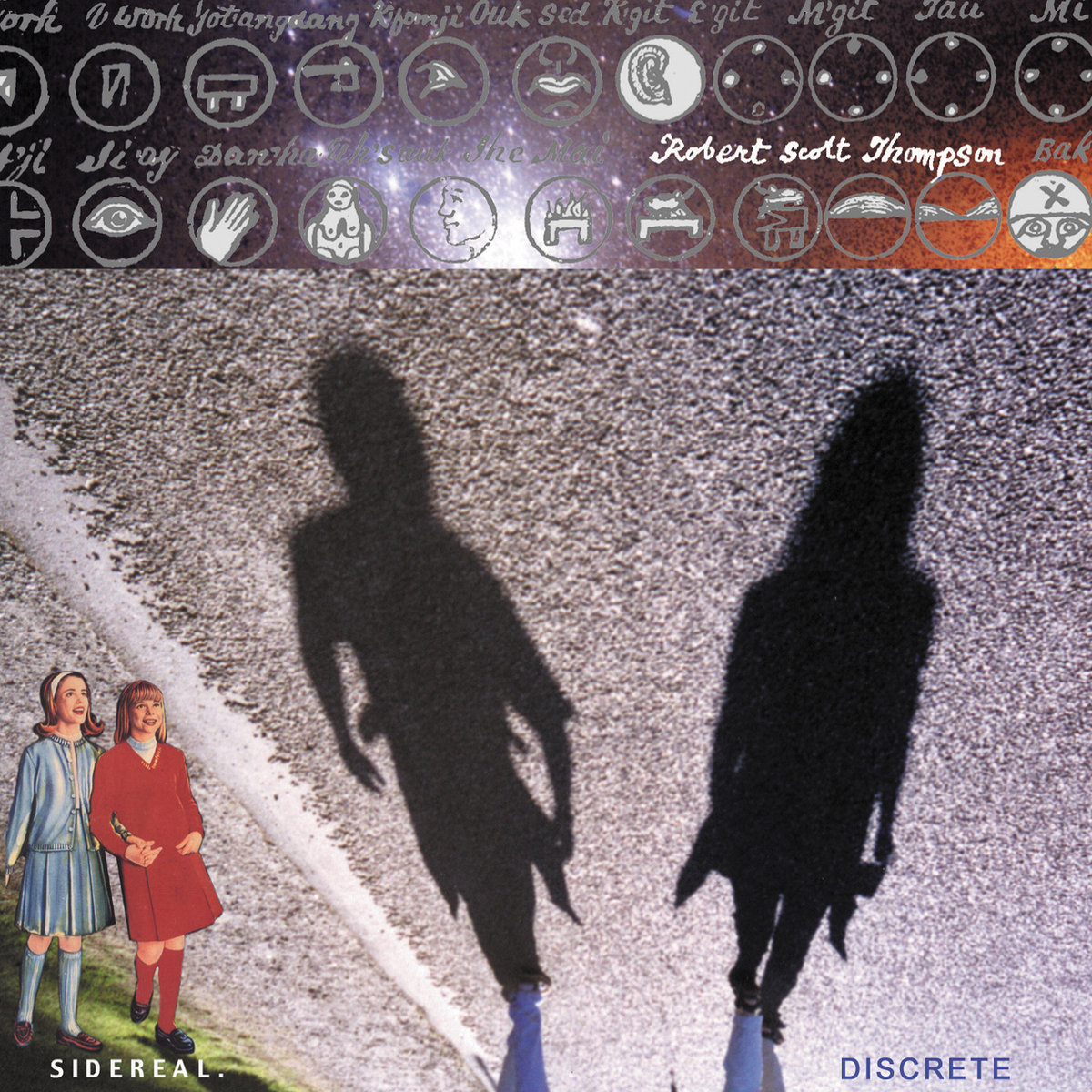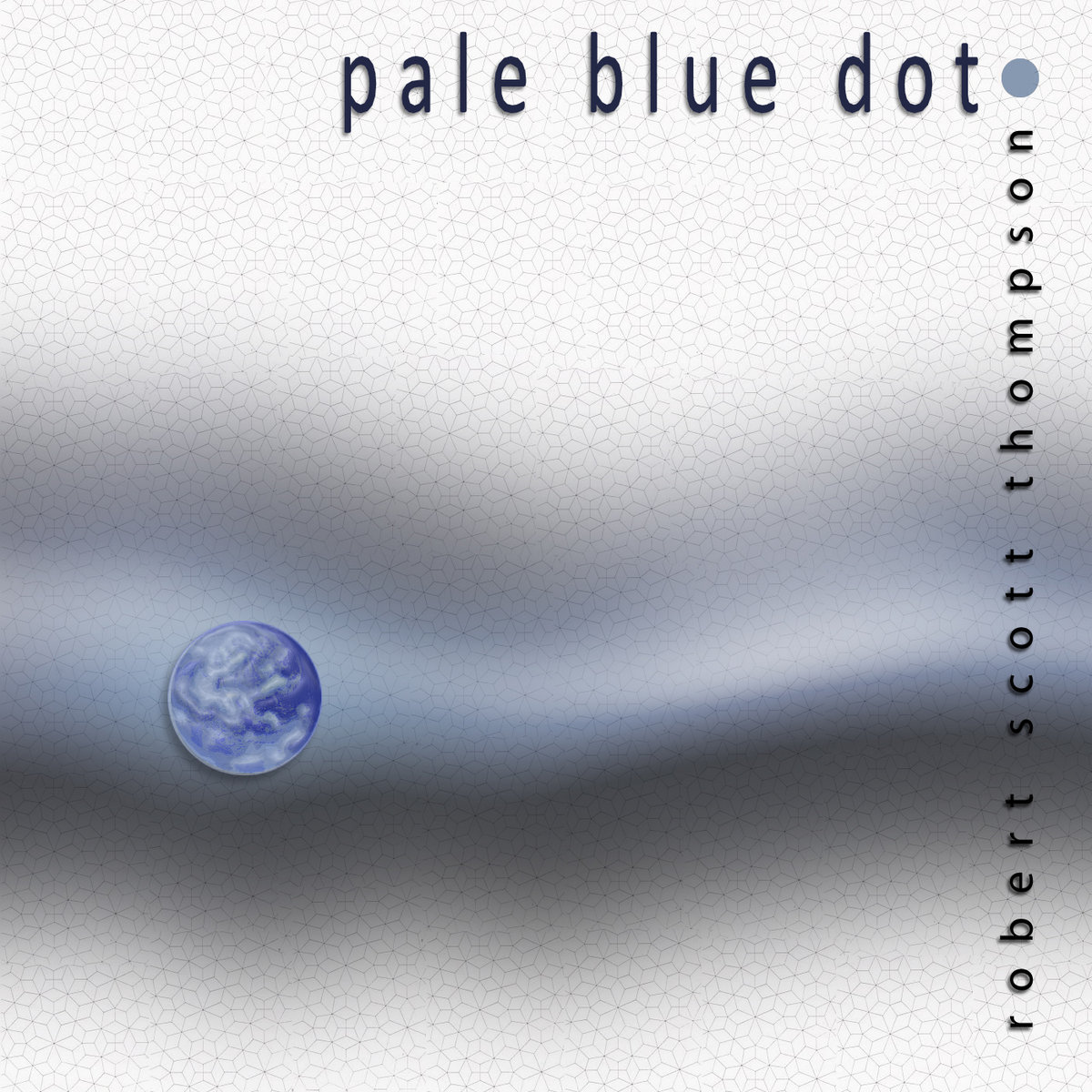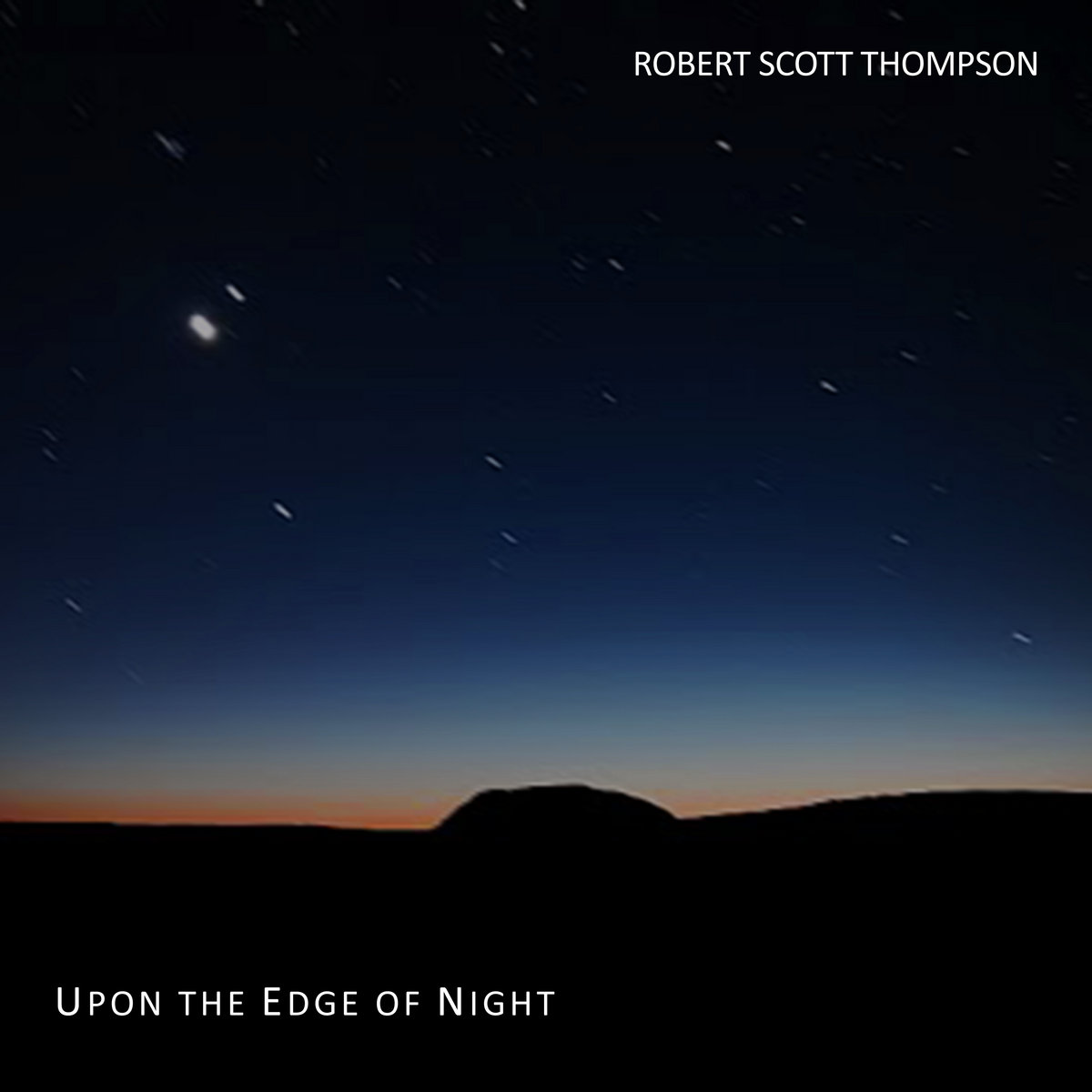Listen to
At the Still Point of the Turning World

At the Still Point of the Turning World (2005) — Robert Scott Thompson — Ambient Music
About as close to Brian Eno’s vision of “Ambient” music as I’ve come, aside from Eno himself. At last, a true backdrop to life, one that doesn’t beg you to follow. A “still point” in every track. Highly recommended…Favorite track: When Dreams Collide. Also: Check out the long-form albums “Parasympathetic Music” and “Centering, Enfolding, Empowering” – Ambient Music for Meditation.
— Brian Bourassa
...reminds me of Brian Eno's classic Apollo...
It reminds me of Brian Eno’s classic Apollo, and Figured in the Drift of Stars makes a serene finish to another great piece of Thompson’s artistry.
— Phil Derby / Electroambient Space
...one of the mainstays and legends of ambient music...
Robert Scott Thompson is one of the mainstays and legends of ambient music … This is an awesome CD!
— Jim Brenholts
...some of the most provocative ambient music currently available...
Robert Scott Thompson writes some of the most provocative ambient music currently available.
— Wind and Wire
...a veteran artist...
This is a moving work crafted with the skill of a veteran artist.
— Dodds Wiley
Ethereal and mystical...
Ethereal and mystical, this work, long overdue for a review from me, shows RST at the top of his game. Serene and calmly seductive, this music, where the titles themselves are pure poetry, makes one want to cry out “his best work yet!” but then one remembers all the other titles, and one feels an odd sense of despair. Until one listens to this again, and realize, yes, this COULD be it, Robert Scott Thompson’s best. Yet, again..
Suffice to say, this music should be gently force-fed those people who think music is only Britney Spears or Metallica (bless their hearts). This is cutting-edge stuff and I never cease to marvel at how Robert Scott Thompson can remain as diverse as he is. For those who think that computer music or electronic music must be cold, harsh and “inhuman”, listen to this with open minds, and think again.
— Ulf Claesson
...'pure' ambient...
This 2005 album is more ‘pure’ ambient than some of Thompson’s other work (note that it’s recorded on the Hypnos label, which produces many great ambient albums).
The album is long, languid, and sonorous, with mild, sustained discordances (which are never strong enough or long enough to be unpleasant) occasionally interspersed with lightly tinkling piano notes, bells or chime-like sounds. It produces a feeling of drifting, while watching a slowly-evolving environment (such as the clouds on the cover art).
This album is HIGHLY RECOMMENDED for fans of RST’s work, or other ambient music in general.
— Steven H. Propp
...truly breathtaking music.
Will this finally be the CD to get Robert Scott Thompson his well-deserved recognition and sales? If ambient music fans continue to turn their back on this artist’s work, and especially if they don’t check out At The Still Point Of The Turning World, they are missing out on truly breathtaking music. Unlike a lot of minimalism, I fell in love with this album immediately. The depth of emotion in the compositions, the complexity inherent in the blending of classical influences with ambient minimalism and subtle electronic experimentalism, the juxtaposition of beauty with sadness, all combine to form a stunning cohesive whole that surely should land on many a “Best of” list at year’s end. I’m confident it will do so with me.”
— Bill Binkelman
...a wondrous fog-shrouded excursion into melancholy minimalism...
Robert Scott Thompson writes some of the most provocative ambient music currently available. By provocative, I mean it literally provokes a reaction. His latest release, At The Still Point Of The Turning World, is a wondrous fog-shrouded excursion into melancholy minimalism that can be both eerily calm and forebodingly beautiful. At times reminiscent of Harold Budd or Tim Story, yet never overtly derivative of either of them. On At The Still Point…, Thompson paints sonic landscapes in muted colors, using impressionistic strokes and techniques that demonstrate his mastery of subtlety, nuance, and neo-classical textures. It’s hard to believe this artist is still relatively undiscovered. On the other hand, Thompson’s recordings are almost always unusually sophisticated and intelligent; he does not record “mass market” ambient music. However, At The Still Point…is, most likely, his most accessible recording for novices, although it still challenges jaded listeners (such as yours truly) with unexpected twists and turns and moments of juxtaposition that can startle and amaze.
Opening with one of his most beautiful compositions, the neo-chamber “of mirrored air” (sounding like it would fit perfectly with György Ligeti’s work in 2001), the CD aims for a midpoint between your mind (appealing to your intellect and aesthetic) and your soul (tugging at your heartstrings with honest and sincere emotional resonance).”of mirrored air” features whisper-thin strings and floating textures suffused with a gentle sadness, along with what sound like gently pealing reverbed guitar. Forlorn flute lines and synths flow serenely through the sad landscape of “casual connecting principle” buoyed by subtle panning electronic effects at the periphery and reverberating tones, like Doppler-shifted car horns far away in the distance. The song seems to breathe at times, inhaling and exhaling in a slow cadence. An echoed plucked string sample (pedal steel guitar? electric bass?) bounces through the soundfield amidst the other elements, adding both musicality and a sense of mild tension.
Even more haunting is “airports for shadows and dust,” one of the tracks that combines Tim Story’s chamber minimalism with Harold Budd’s stark musical vision, but with Thompson’s indelible stamp of electronic ambience (of the three musicians, Robert Scott Thompson is the most adventurous when it comes to electronic music). Solitary piano notes strike against a deep dark series of bassy yet melodic drones and washes, counterpointed by twinkling textures here and there. Thompson reveals his penchant for experimentalism on “water out of sunlight” an eleven-minute exercise in subtle dissonance, ethereal and mournful synth chorales (a little like Larry Kucharz here), scratching noise background elements, and arrhythmic sparkles of starry pinpricks in an inky black sky. Swells of dramatic lower register keyboards later in the piece impart a sense of awe and power, although done so softly that one is not lifted out of the main mood of the piece, which I would describe as reflective with a touch of sorrow. “when dreams collide” (Thompson’s titles are always poetic and lyrical) reintroduces the soft flute lines of “casual connecting principle” this time mixed with drones and shadowy textures, crafting a floating sense of broad open vistas. This track evolves into classic spacemusic, evoking images of deserted planets’ surfaces stretching out below you or distant star clusters and nebula as you traverse the backwaters of the cosmos. More experimentalism rears its head on the title track, as vibrating pulses and tones reverberate with a distinct metallic characteristic seeming to encircle echoed acoustic piano notes. Soft and subtle whirring textures come and go, as if teasing the piano’s beauty with quick touches of electronic impulses. One of the more overtly electronica pieces is “tinted in temporal hue” which features Thompson assembling assorted pulsing and reverberating synth tones, melding them together, then breaking them apart, as if they were colored inks in a tank and he was experimenting with watching what patterns emerge as various colors are eye-dropped one at a time into the reservoir, setting them off against beautiful chorales and then taking the music into deep cavernous drones and whistling tones before lightening the mood near the end. Thompson closes the album with another Budd-like piece, “figured in the drift of stars,” in which sustained and echoed piano notes float through a field of synth washes, bell-like tones, and a myriad of shimmering effects. It’s easily the least melancholy song on the album, but is still colored with a palpable somberness.
Will this finally be the CD to get Robert Scott Thompson his well-deserved recognition and sales? If ambient music fans continue to turn their back on this artist’s work, and especially if they don’t check out At The Still Point Of The Turning World, they are missing out on truly breathtaking music. Unlike a lot of minimalism, I fell in love with this album immediately. The depth of emotion in the compositions, the complexity inherent in the blending of classical influences with ambient minimalism and subtle electronic experimentalism, the juxtaposition of beauty with sadness, all combine to form a stunning cohesive whole that surely should land on many a “Best of” list at year’s end. I’m confident it will do so with me.
— Bill Binkelman, Wind and Wire
Infused with both thought and feeling...
With At the Still Point of the Turning World (69’05”), Robert Scott Thompson presents an alternative vision of Ambient Music. This album is weirdly unsettling while at the same time involved with the familiar and engaging interactions of space and sound. Infused with both thought and feeling, this work ranges from dense and textured to lithe and airy. Only the ambition of the idea puts a limit on the work, and Thompson is still finding new truths in his artfully woven nocturnal meditations. The sororities are so different, so unique. The reverberant sounds of piano are certain but most all else is some sort of hybrid of synthesized tone and acoustic transient. Ethereal choirs and strings comfort the listener while elsewhere sinister chords swell in a slow rolling cloud of sonic turbulence. Finding equilibrium between complexity and accessibility, Thompson combines the push of his experimental tendencies with the pull of new age luminosity to realize music that is agreeable but by no means simplistic. In his work, Thompson seeks stillness, balance and harmony. Each track is a layered investigation into the lure of ominous atmospheres, the purity of light and the tension between these two realms. Ambiguity and uncertainty are basic themes in art. Using a form created from electronically generated sounds, Thompson renders the dreamlife of the artist and his relationship to the world.
— Chuck van Zyl
...atmospheric sounds blend seamlessly into one's immediate environment..
To a near-perfect degree, Robert Scott Thompson’s At the Still Point of the Turning World achieves that sometimes-stated ambient goal of being music that can be as much listened to as ignored. Call it “mirage music” whose atmospheric sounds—sometimes brooding, sometimes serene—blend seamlessly into one’s immediate environment. But though that could be construed as a criticism, it’s also in a strange way a compliment. It’s the kind of recording that, even after being heard, say, ten times, leaves only the barest of memory traces (even when listened to at maximum volume, it might be added).
Admittedly, that impression changes somewhat once headphones are donned as the material then asserts itself more prominently. No instrumentation details are included but pianos, silken synth tones, guitars, and voices (whether the latter are natural or simulated isn’t clarified) drift throughout. Distant string tones in “Of Mirrored Air” introduce the collection, after which flute-like synth tones emerge in “Causal Connecting Principle.” Tinkling chimes and celestial voices heighten the incandescent shimmer of “Water Out of Sunlight.” Shuddering flute tones and dark synth textures heighten the aura of mystery that pervades “When Dreams Collide” and “Tinted in Temporal Hue.” “Figured in the Drift of Stars,” by contrast, brings the album to a peaceful and delicate close with minimal piano patterns and glimmering synth tones. Here and in the other eleven pieces, Thompson’s slow-motion music achieves a paradoxical state of stillness and movement.
The seventy-minute At the Still Point of the Turning World serves as a comprehensive introduction to Thompson’s work.
— Textura
The structure is one of swaying tonalities, generating lush harmonics...
This release from 2005 features 69 minutes of airy ambience. Sparse soundscapes designed to instill serenity. Atmospheric textures float with delicate determination, transporting the audience to impossible heights. Cellos and violins are utilized to achieve a classical mien amid the synthetic fabric. Traditional piano plays a vital role, vitalizing the flow with solitary notes of distinctly fluid properties. Later, liquid sounds provide refreshing moisture to one of the CD’s longer tracks.
Some pieces feature denser tones, but they do not disrupt the dreamlike quality of the music. A sense of drama is achieved that hints at momentous turns imminent in the psyche of the listener.
The structure is one of swaying tonalities, generating lush harmonics that make the most of their minimal attributes. Overlapping and intertwining these textures imbues the tuneage with a deceptive sense of motion. By sustaining a chord for a seeming eternity, Thompson creates a mellow foundation that is then augmented and embellished by other tenuous sonics.
— Sonic Curiosity
...music with passages of melancholy and intense beauty...
Ambient soundscapes with subtle brooding shades and gentle pianos. Still Point feels almost orchestral at times, empty and drifting at others. Melodic pads, dissonant ripples and dense currents of sound mingle with plucked tones and deep, deep drones. Processed pianos and chimes present a simple harmonic foreground bringing light to clouds that occasionally harbour ethereal voices hidden somewhere within; metallic clangs and bell trees along with noises that resemble huge plucked springs stir the mix bringing variation to an album that constantly changes and alters its path.
Serene, drifting sonic densities that are mostly shadowy and overcast – yet often backlit or silvered at the edges. Still Point often has a plaintive tone, becoming increasingly poignant toward the final tracks. Robert Scott Thompson takes us from low, fog-thick banks of mist high into the sky and into clarity – panoramic and angelic. The shifts of mood across this album are quite dramatic – allow yourself to be immersed and you’ll find moments of that aching beauty that pulls at the heart and passages of moody ambience, folding in on themselves, heaving, breathing.
This is a strong album of slow drifting melodies and washes, well captured in track titles – Water Out of Sunlight, Tinted in a Temporal Hue, Figured in the Drift of Stars. The longest piece on the CD is ten minutes fifty nine seconds long – the shortest one minute forty seven, this great spread mirroring the variety of sound within the individual pieces. Robert Scott Thompson is no newcomer to the ambient scene having a large number of releases under his belt as you can see from the website at Aucourant Records.
Ambient fans who enjoy music without a beat – quite melodic in structure, not really minimal and with plenty of shifts in atmosphere. Moody music with passages of melancholy and intense beauty.
— Morpheus Music Reviews
...another great piece of Thompson's artistry.
Thompson’s latest disc features lots of shorter quiet tracks, often with intricate layers to explore. Starting in a most understated fashion, “Of Mirrored Air” is barely audible for the first minute. It is like listening to small ripples on an otherwise still pond. “Causal Connecting Principle” is both brooding and sad, and will send unsettling shivers down your spine. “Airport for Shadows and Dust” (great name) is smooth as glass, but dark as obsidian at times. “Presences” is a dissonant, richly complex work, even though it lasts less than two minutes. “Water out of Sunlight” is somewhat brighter as the name implies, but tinges of shadow remain. Distant flutes begin “When Dreams Collide,” the disc’s most delicate floater. Traces of classical influences creep in on a few numbers including this one. The title track plinks out sparse notes as rumbling drones and odd strings ring out, like plucking the inside of a piano. All twelve tracks are compelling in their own way, but my favorite may be “Tinted In Temporal Hue,” particularly the midsection with its rich layers of dark synth textures. After so much darkness, Thompson brings us into the light on the closing track, “Figured in the Drift of Stars,” a beautiful piece with piano and slow washes of synths. It reminds me of Brian Eno’s classic Apollo, and makes a serene finish to another great piece of Thompson’s artistry.
— Phil Derby / Electroambient Space
This is a moving work crafted with the skill of a veteran artist.
Many listeners have been eagerly looking forward to Robert Scott Thompson’s new album on the Hypnos label and it certainly fulfills those high expectations. Thompson is a music professor with an extensive background in computer and electronic music, and has an extensive back catalog of high quality releases. This work is made up of twelve tracks, varying in length from just under two minutes to nearly eleven minutes, with most in the three to seven minute range.
There are no beats here, just shifting sculptures of evocative atmospheric beauty. Each piece is an exquisitely crafted miniature world of it’s own that blends with the greater whole. There are many outstanding moments in this creation, and each track has it’s highlights. Here are some high points: The suspenseful orchestral swells in “Of Mirrored Air” begin the disc. Discordant background melodies swirl behind melancholy piano and string sounds in “Airports For Shadow And Dust”. The subtle menacing layers of “A Theory Of Place ” give way to the wordless vocal spirit world of “Presences”. Crackling, thawing sounds fuse with long drones and chimes in “Water Out Of Sunlight”. Flute-like melodies and drones ebb and flow with a distant choir in “When Dreams Collide”. A lonely piano recalls the past through revolving electronic mists in “Tinted In Temporal Hue”. “Melting Through Inches Of Mercury” has piano melody wrapped in synth layers melting into the serene conclusion of “Figured In The Drift Of Stars”.
This is a moving work crafted with the skill of a veteran artist. Listening at different volume levels reveals new textures and signatures within the excellent production. Thompson has created a work that effortlessly blends classical and modern influences into something that is uniquely his own. Highly recommended, this deserves a large and appreciative audience.
— Dodds Wiley
RELATED RELEASES






Reviews